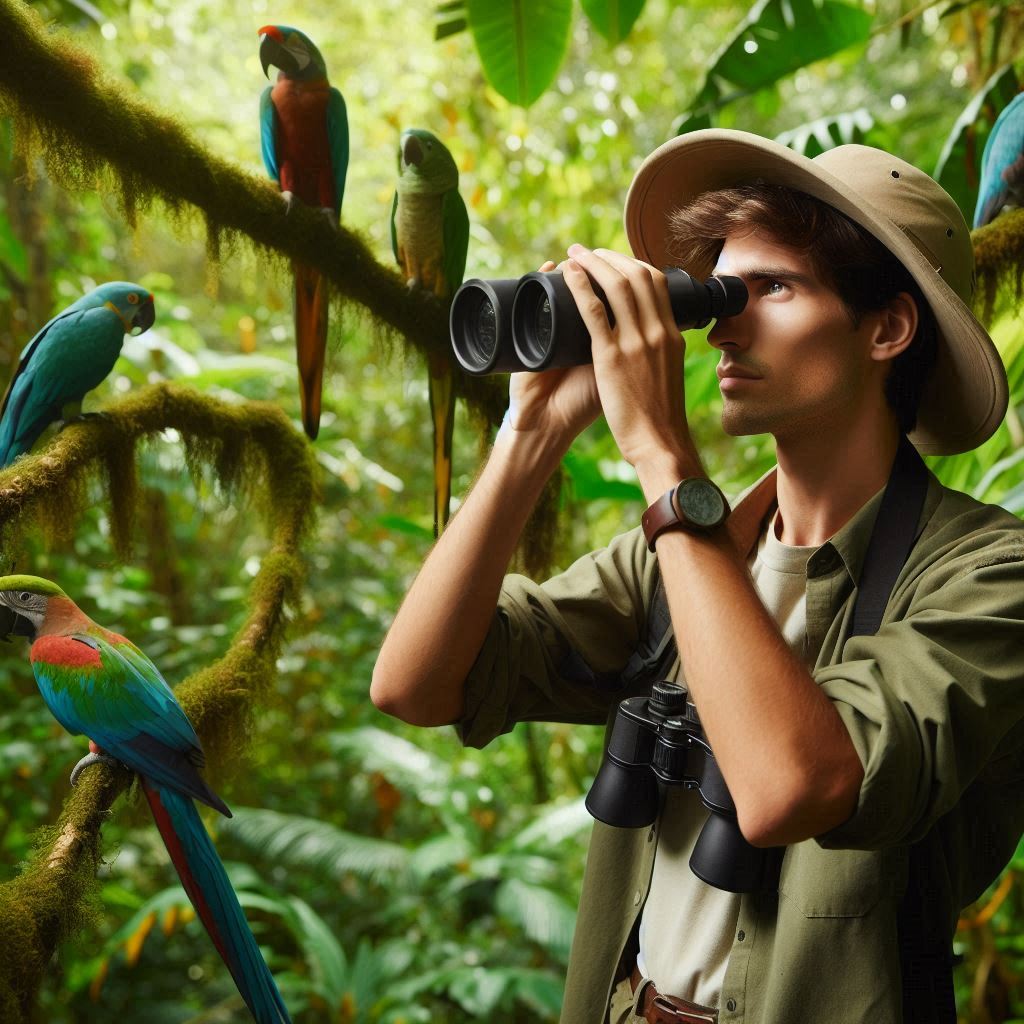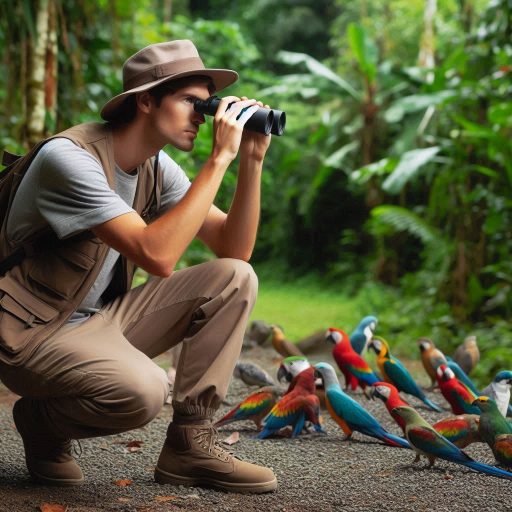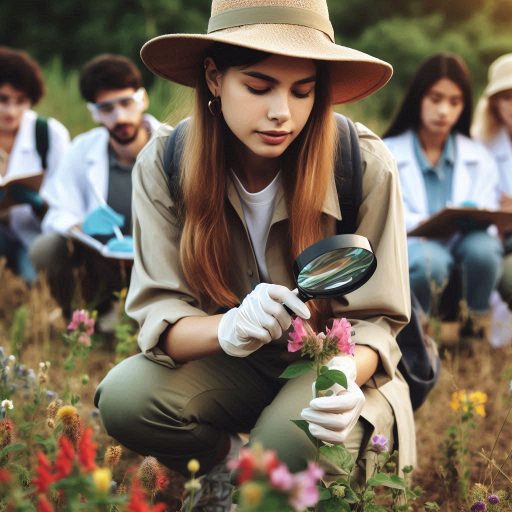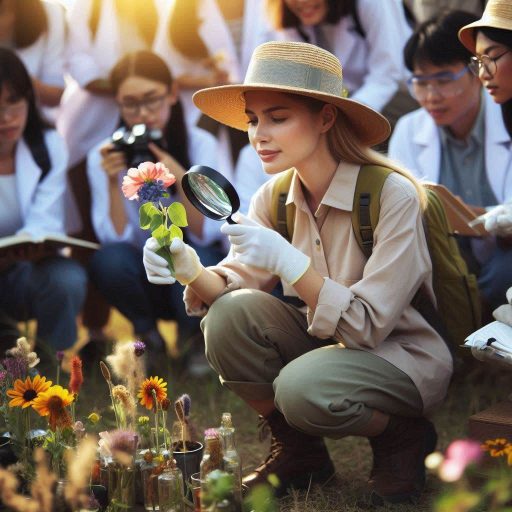Introduction
Public outreach is essential in educating communities about zoology and fostering a deeper understanding of wildlife.
In an age where biodiversity is declining and ecosystems are under threat, outreach initiatives play a vital role in raising awareness about these pressing issues.
By engaging individuals with the natural world, public outreach inspires curiosity and encourages people to learn about the complex relationships that exist within ecosystems.
Knowledge of zoology enhances appreciation for the diversity of life and highlights the challenges that many species face today, from habitat loss to climate change.
When communities are informed about zoology, they become more active participants in conservation efforts.
Educational initiatives not only provide essential information but also cultivate a sense of stewardship towards the environment.
Increased awareness leads to a stronger commitment to wildlife preservation and protection.
Programs like workshops, school partnerships, and community events encourage residents to explore local habitats, learn about native species, and understand their ecological significance.
This hands-on approach allows individuals to forge personal connections with their environment, motivating them to advocate for sustainable practices and policies that benefit both wildlife and their communities.
Define Zoology and Its Significance
What Zoology Is and Why It Is Important
Zoology is the scientific study of animals and their behavior, biology, and conservation.
This field of biology explores diverse aspects of animal life, including anatomy, physiology, and ecology.
Understanding zoology helps us appreciate the complexity of animal life and the roles these creatures play in ecosystems.
Zoology is vital for several reasons.
First, it enhances our knowledge of animal behavior.
By studying animals in their natural habitats, zoologists uncover how species interact with each other and their environment.
This understanding can lead to better wildlife management practices and informed conservation strategies.
Second, zoology plays a crucial role in animal biology.
By investigating the anatomy and physiology of various species, scientists can identify health issues and develop medical treatments for both animals and humans.
For example, research on animal diseases often leads to advancements in veterinary medicine and even human health care.
How Zoology Contributes to Understanding Animal Behavior, Biology, and Conservation
Zoology is essential for conservation efforts.
With the increasing threat of habitat destruction and climate change, understanding animal populations and their needs becomes critical.
Zoologists work to monitor endangered species, develop recovery plans, and promote habitat preservation.
Their research helps ensure that future generations can enjoy diverse animal life.
Moreover, zoology contributes to our understanding of evolutionary processes.
By studying the relationships between different species, zoologists can trace evolutionary lineages and identify how species adapt to changing environments.
This knowledge is crucial for predicting how animals may respond to future environmental changes.
In addition, zoology helps raise awareness about biodiversity.
It emphasizes the importance of every species in maintaining ecological balance.
Educating the public about the significance of wildlife and their habitats fosters a sense of responsibility toward conservation.
Public outreach efforts play a critical role in zoology.
Educational programs and community events engage individuals of all ages in learning about animal life.
These initiatives inspire people to appreciate and protect wildlife.
Schools, zoos, and conservation organizations often collaborate to promote awareness and understanding of zoological sciences.
Zoology is a vital field of study that contributes significantly to our understanding of the animal kingdom.
Its insights into animal behavior, biology, and conservation are essential for fostering a sustainable relationship between humans and wildlife.
By promoting awareness of zoology, we can encourage future generations to value and protect the incredible diversity of life on Earth.
Importance of Public Outreach in Zoology
The Role of Public Outreach in Raising Awareness About Wildlife Issues
Public outreach is crucial in zoology for raising awareness about wildlife issues.
Effective outreach programs connect scientists with the community, making complex zoological concepts accessible.
These programs highlight the importance of biodiversity and the threats many species face, such as habitat loss and climate change.
Through workshops, seminars, and community events, zoologists share their knowledge with the public.
They discuss the critical role wildlife plays in ecosystems and how human activities impact animal populations.
By engaging individuals directly, outreach fosters a deeper understanding of wildlife conservation.
Media campaigns also serve as vital tools for outreach.
Documentaries, social media posts, and articles help spread information quickly and effectively.
They can draw attention to specific wildlife issues, motivating the community to take action.
When people recognize the challenges animals face, they are more likely to support conservation efforts.
How Educating the Community About Zoology Can Lead to More Informed Decisions Regarding Conservation and Environmental Protection
Educating the community about zoology leads to more informed decisions regarding conservation and environmental protection.
Knowledge empowers individuals to understand the significance of protecting wildlife and their habitats.
When people grasp the interconnectedness of ecosystems, they appreciate their role in sustaining biodiversity.
Schools and educational institutions play a significant role in this process.
By incorporating zoology into their curricula, they nurture a generation that values wildlife.
Field trips to zoos, aquariums, and nature reserves provide hands-on learning experiences that inspire curiosity and empathy toward animals.
Community programs also promote volunteer opportunities in conservation efforts.
Engaging the public in activities such as habitat restoration or wildlife monitoring fosters a sense of stewardship.
When individuals participate in these initiatives, they develop a personal connection to the environment, reinforcing the importance of their actions.
Moreover, informed communities can advocate for policies that protect wildlife.
As citizens become more aware of environmental issues, they are more likely to support legislation that promotes conservation.
This collective effort can lead to significant changes at local, national, and global levels.
Public outreach plays a vital role in zoology by raising awareness about wildlife issues.
By educating the community, we empower individuals to make informed decisions regarding conservation and environmental protection.
This awareness fosters a culture of responsibility and stewardship toward our planet and its inhabitants.
Ultimately, effective outreach leads to a more engaged and proactive society in preserving the richness of life on Earth.
Read: What Does a Geologist Do? Career Overview and Insights
Strategies for Effective Public Outreach
Different Methods of Engaging the Community
Engaging the community is essential for effective public outreach in zoology.
Various methods can help create meaningful connections and promote wildlife awareness.
Workshops are an excellent way to engage individuals directly.
These hands-on sessions allow participants to explore topics in-depth.
They can include activities like animal tracking, habitat restoration, or wildlife photography.
Such workshops not only educate but also empower community members to take action.
Presentations at schools, community centers, and local events also play a vital role.
These talks can cover various zoological topics, such as animal behavior, conservation challenges, and ecological significance.
Interactive presentations that include visuals and real-life examples captivate audiences and encourage participation.
Educational programs in schools can further enhance community engagement.
Collaborating with educators to create curricula that incorporate zoology ensures students learn about local wildlife and ecosystems.
Field trips to zoos, aquariums, and nature reserves provide students with firsthand experiences that deepen their understanding and appreciation for animals.
In addition, community events such as wildlife fairs or nature walks foster a sense of connection.
These gatherings bring people together to celebrate local biodiversity.
They can include activities like guided tours, live animal demonstrations, and informational booths.
These events allow individuals to learn about wildlife conservation while building community bonds.
The Use of Social Media and Online Platforms to Reach a Wider Audience
Social media and online platforms are powerful tools for reaching a broader audience.
These channels can significantly enhance public outreach efforts in zoology.
Social media platforms like Facebook, Instagram, and Twitter allow organizations to share information quickly and widely.
Posting engaging content, such as stunning wildlife photos, educational videos, and infographics, can attract attention and spark interest.
Live-streaming events, such as animal releases or behind-the-scenes tours, creates real-time engagement and allows followers to connect with wildlife.
Online webinars and virtual events have become increasingly popular, especially after the pandemic.
These formats enable organizations to reach individuals who may not attend in-person events.
They can cover a variety of topics, allowing participants from different locations to engage with experts in the field.
This accessibility broadens the audience and promotes knowledge sharing across diverse communities.
Email newsletters can also keep the community informed about upcoming events, recent research, and conservation efforts.
By regularly sharing updates, organizations can maintain engagement and encourage ongoing participation in outreach initiatives.
Finally, collaborating with influencers in the conservation field can amplify outreach efforts.
Partnering with individuals who have a strong online presence can help spread awareness about wildlife issues and engage new audiences.
These collaborations can significantly enhance visibility and inspire action within the community.
Effective public outreach in zoology requires diverse strategies for community engagement.
By utilizing workshops, presentations, educational programs, and social media platforms, organizations can connect with a wider audience.
These approaches foster awareness and inspire action, ultimately leading to more robust conservation efforts.
Read: Educational Path: Becoming a Geologist in the USA
Collaboration with Local Organizations and Schools
The Importance of Partnering with Local Schools, Zoos, and Conservation Organizations
Collaborating with local schools, zoos, and conservation organizations is crucial for broadening outreach efforts in zoology.
These partnerships leverage resources and expertise to create impactful educational programs that benefit the community.
Local schools are key players in this collaboration.
By partnering with educators, zoologists can develop tailored curricula that meet educational standards while incorporating relevant zoological concepts.
These programs can introduce students to animal behavior, ecology, and conservation efforts, fostering an early appreciation for wildlife.
Zoos serve as valuable resources for outreach.
They provide educational opportunities that can enhance community engagement.
Collaborative programs, such as guided tours and interactive exhibits, allow students and families to connect with animals in a meaningful way.
Zoos can also host workshops and presentations that feature experts in zoology, enriching the learning experience.
Conservation organizations also play a vital role in outreach.
By collaborating with these groups, zoologists can align their efforts with ongoing conservation initiatives.
Joint events and campaigns can amplify messages about the importance of protecting wildlife and their habitats.
These partnerships can lead to more extensive public engagement and support for conservation actions.
Moreover, working together with local entities fosters a sense of community ownership over wildlife conservation efforts.
When organizations unite, they can pool resources, share knowledge, and create more comprehensive outreach programs that address local wildlife issues effectively.
The Benefits of Engaging with Communities Directly to Educate Them About Zoology
Engaging directly with communities offers numerous benefits in educating them about zoology.
First, it creates personal connections that enhance learning.
When experts interact with community members, they can tailor their messages to resonate with local interests and concerns.
This personalized approach increases the likelihood of community members absorbing and retaining information.
Direct engagement also fosters a sense of responsibility toward wildlife.
By educating individuals about local animal species and their ecosystems, communities become more aware of the impact their actions can have on the environment.
This awareness cultivates a culture of stewardship, encouraging individuals to take proactive measures in conservation.
Additionally, community engagement can lead to increased volunteerism.
When people understand the significance of wildlife conservation, they are more likely to participate in local initiatives.
Volunteering for habitat restoration projects, wildlife monitoring, or educational programs can strengthen community bonds and promote collective action.
Furthermore, engaging with diverse communities ensures inclusivity in conservation efforts.
By reaching out to various demographic groups, organizations can address different perspectives and values regarding wildlife.
This inclusivity fosters a more comprehensive understanding of conservation challenges and solutions, ultimately leading to more effective outreach.
Finally, direct community engagement helps build long-lasting relationships between zoologists and the public.
These relationships facilitate ongoing dialogue, enabling continuous education and involvement in wildlife conservation.
As communities become more informed and engaged, they contribute to a more sustainable future for both wildlife and ecosystems.
Collaboration with local schools, zoos, and conservation organizations is essential for broadening outreach efforts in zoology.
Engaging directly with communities enhances education about wildlife, fosters stewardship, and encourages volunteerism.
These partnerships create a foundation for sustainable conservation efforts that benefit both animals and the people who share their habitats.
Read: Botany Career Fairs and Networking Events

Hands-On Experiences and Interactive Activities
Advocate for Interactive Activities, Such as Wildlife Tours, Nature Walks, and Animal Encounters, to Engage the Community
Interactive activities are vital for engaging the community in zoology and conservation.
Experiences such as wildlife tours, nature walks, and animal encounters provide unique opportunities for individuals to connect with the natural world.
Wildlife tours offer participants a chance to observe animals in their natural habitats.
Guided tours led by knowledgeable zoologists or conservationists allow participants to learn about local wildlife, their behaviors, and their ecosystems.
These tours not only educate but also create lasting memories that inspire individuals to appreciate and protect wildlife.
Nature walks are another effective way to engage the community.
These walks can highlight the diversity of local flora and fauna while teaching participants about the interdependence of species in ecosystems.
By exploring their surroundings, individuals can gain a deeper understanding of the importance of conservation and habitat preservation.
Animal encounters at zoos or conservation centers provide hands-on experiences that captivate audiences.
Direct interactions with animals, such as feeding sessions or behind-the-scenes tours, create a sense of excitement and connection.
Participants often leave with a newfound respect for wildlife and a greater awareness of the challenges animals face in the wild.
Engaging the community through these interactive activities encourages active participation.
When people are involved, they are more likely to internalize the information shared during these experiences.
This engagement fosters a sense of ownership over conservation efforts and encourages participants to advocate for wildlife protection.
The Impact of Hands-On Experiences in Fostering a Deeper Appreciation for Wildlife and Conservation
Hands-on experiences significantly impact how individuals perceive and appreciate wildlife and conservation.
These immersive activities allow participants to see, hear, and feel the natural world, making learning more meaningful.
When individuals encounter animals up close, they often develop empathy and compassion for them.
This emotional connection can be a powerful motivator for conservation efforts.
Participants who experience wildlife firsthand are more likely to become advocates for protecting animal habitats and species.
Moreover, hands-on experiences promote curiosity and inquiry.
When participants engage in activities like wildlife tracking or identifying local species, they become active learners.
This engagement encourages them to ask questions, seek answers, and explore further, deepening their understanding of zoology.
Additionally, these experiences can foster a sense of community among participants.
Shared activities create bonds and facilitate discussions about wildlife conservation.
When individuals collaborate in hands-on activities, they can inspire each other to take action and contribute to local conservation initiatives.
Finally, hands-on experiences can serve as a catalyst for lifelong learning.
Individuals who engage with wildlife in interactive settings often seek more information and involvement in conservation efforts.
They may pursue educational opportunities in zoology or volunteer for local organizations, furthering their commitment to wildlife preservation.
Advocating for interactive activities like wildlife tours, nature walks, and animal encounters is essential for engaging the community in zoology.
These hands-on experiences foster a deeper appreciation for wildlife and conservation, leading to increased advocacy and commitment to protecting our natural world.
By creating opportunities for individuals to connect with wildlife directly, we can inspire a generation dedicated to the preservation of our planet’s biodiversity.
Read: Preparing for a Botany PhD: Tips and Advice
Addressing Misconceptions and Myths
Common Misconceptions About Zoology and Animals and Provide Accurate Information to Dispel Myths
Misconceptions about zoology and animals can significantly hinder public understanding and conservation efforts.
Addressing these myths is crucial for fostering a more informed community.
One common misconception is that all snakes are dangerous.
While some snake species are venomous, most are harmless and play vital roles in their ecosystems.
Snakes control pest populations and help maintain ecological balance.
Educating the public about these benefits can reduce fear and encourage appreciation for these reptiles.
Another myth is that animals act solely on instinct.
While instinct plays a role in animal behavior, many species demonstrate complex cognitive abilities.
For example, elephants exhibit empathy and problem-solving skills, while crows are known for their tool-making abilities.
Highlighting these traits can help the community appreciate the intelligence of various species.
Additionally, people often believe that wildlife populations are stable.
In reality, many species face significant threats from habitat loss, climate change, and poaching.
Raising awareness about these challenges is essential for garnering support for conservation initiatives.
By providing accurate information and dispelling these myths, zoologists can foster a deeper understanding of animals and their roles in ecosystems.
This understanding encourages a more positive attitude toward wildlife and conservation efforts.
The Role of Public Outreach in Correcting Misinformation and Promoting Scientific Literacy
Public outreach plays a vital role in correcting misinformation and promoting scientific literacy.
Engaging with the community through various channels helps disseminate accurate information about zoology and wildlife.
Educational programs, workshops, and seminars provide opportunities to address misconceptions directly.
By presenting scientific evidence and engaging discussions, zoologists can clarify common myths and offer evidence-based insights.
This interactive format allows for questions and discussions, further enhancing understanding.
Social media platforms also serve as essential tools for outreach.
Organizations can share informative content, such as articles, infographics, and videos that counter misinformation.
Utilizing engaging visuals and relatable language makes complex scientific concepts accessible to a broader audience.
Furthermore, partnerships with local schools and community organizations amplify outreach efforts.
By collaborating on educational initiatives, zoologists can reach diverse demographics and address specific misconceptions relevant to local communities.
This targeted approach ensures that information resonates with audiences and meets their unique needs.
Additionally, promoting scientific literacy is critical in combating misinformation.
Public outreach efforts should emphasize critical thinking and the scientific method.
Encouraging individuals to ask questions, seek evidence, and evaluate sources fosters a culture of inquiry.
This mindset helps communities become more discerning consumers of information, reducing the spread of myths.
Finally, creating community events, such as wildlife fairs or open houses at local zoos, allows for direct interaction with experts.
These events can provide firsthand experiences and opportunities for discussion.
They serve as platforms for educating the public about wildlife, conservation, and the importance of accurate information.
Addressing misconceptions and myths about zoology and animals is crucial for fostering a well-informed community.
Public outreach plays a significant role in correcting misinformation and promoting scientific literacy.
Through engaging educational programs, social media campaigns, and community partnerships, we can dispel myths and enhance understanding of the vital role that zoology plays in conservation and biodiversity.
Discover More: Plant Science Internships: What to Expect
See Related Content: Steps to Becoming a Professional Ecologist in the USA
Encouraging Community Involvement and Action
Promote Citizen Science Projects and Volunteer Opportunities for Community Members to Get Involved in Wildlife Research and Conservation Efforts
Encouraging community involvement in wildlife research and conservation is essential for fostering a culture of stewardship.
Citizen science projects offer valuable opportunities for community members to contribute to conservation efforts while enhancing their understanding of zoology.
Citizen science projects invite individuals to collect data, monitor species, or participate in research initiatives.
For example, projects like bird counts or butterfly surveys enable citizens to observe wildlife in their neighborhoods and contribute important data to scientific research.
These initiatives empower community members, making them feel directly involved in the scientific process.
Volunteer opportunities further enhance community engagement.
Local conservation organizations often seek volunteers for habitat restoration, wildlife monitoring, and educational outreach.
By participating in these activities, community members can develop practical skills while contributing to meaningful conservation work.
Volunteering not only benefits wildlife but also fosters a sense of community among participants.
Promoting these citizen science projects and volunteer opportunities can significantly increase public awareness of local wildlife issues.
When individuals actively participate in conservation, they become advocates for wildlife protection.
They share their experiences with friends and family, spreading awareness and inspiring others to get involved.
Transform Your Career Today
Unlock a personalized career strategy that drives real results. Get tailored advice and a roadmap designed just for you.
Start NowThe Importance of Empowering the Community to Take Action in Protecting Wildlife and Their Habitats
Empowering the community to take action in protecting wildlife and their habitats is crucial for sustainable conservation efforts.
When individuals feel capable and informed, they are more likely to engage in meaningful actions that benefit the environment.
One way to empower the community is through education.
Providing resources, workshops, and training sessions equips individuals with the knowledge they need to make informed decisions.
For instance, teaching residents about native plant species encourages them to create wildlife-friendly gardens that support local ecosystems.
Moreover, highlighting local conservation issues fosters a sense of urgency and responsibility.
By discussing specific challenges, such as habitat loss or pollution, community members can identify ways to take action.
This can include advocating for local policies, participating in clean-up events, or supporting conservation organizations.
Additionally, celebrating community achievements in conservation reinforces the importance of individual and collective action.
Recognizing the contributions of local volunteers and citizen scientists can inspire others to participate.
Showcasing success stories demonstrates the tangible impact that community involvement can have on wildlife protection.
Encouraging collaboration among community members amplifies the impact of individual actions.
Forming neighborhood groups or conservation clubs can create a supportive network for sharing ideas and resources.
These groups can organize events, share information, and coordinate volunteer efforts, enhancing overall engagement in conservation initiatives.
Finally, creating channels for ongoing communication between the community and conservation organizations fosters transparency and trust.
Regular updates on local wildlife issues, upcoming events, and opportunities for involvement keep community members engaged and informed.
Promoting citizen science projects and volunteer opportunities is essential for encouraging community involvement in wildlife research and conservation.
Empowering individuals to take action helps protect wildlife and their habitats, fostering a sense of responsibility and stewardship.
By engaging the community in these efforts, we can create a more informed and active society dedicated to preserving our natural world.
Delve into the Subject: Specializations in Zoology: Fields and Focus Areas
Conclusion
Public outreach plays a crucial role in educating communities about zoology and fostering a deeper understanding of wildlife.
Through various programs, people learn about animal behavior, habitats, and the importance of biodiversity.
Educational initiatives help individuals appreciate the complexities of ecosystems and the critical role each species plays within them.
Engaging educational programs foster a sense of responsibility toward wildlife conservation.
By organizing workshops, lectures, and hands-on activities, organizations can inspire interest in zoological studies.
These experiences not only provide knowledge but also encourage active participation in conservation efforts.
Collaborations with local schools can amplify outreach initiatives, reaching a wider audience.
Schools can integrate zoology into their curriculums, allowing students to explore the subject more deeply.
Additionally, social media campaigns can enhance awareness and promote events related to zoology.
Sharing compelling stories and images of wildlife can capture public interest.
Highlighting conservation success stories can inspire community members to get involved.
Ultimately, public outreach not only informs but also empowers individuals to protect our planet‘s diverse species.
Investing in education strengthens the community’s commitment to preserving wildlife for future generations.
By prioritizing outreach, we create a more informed public ready to support conservation initiatives.




